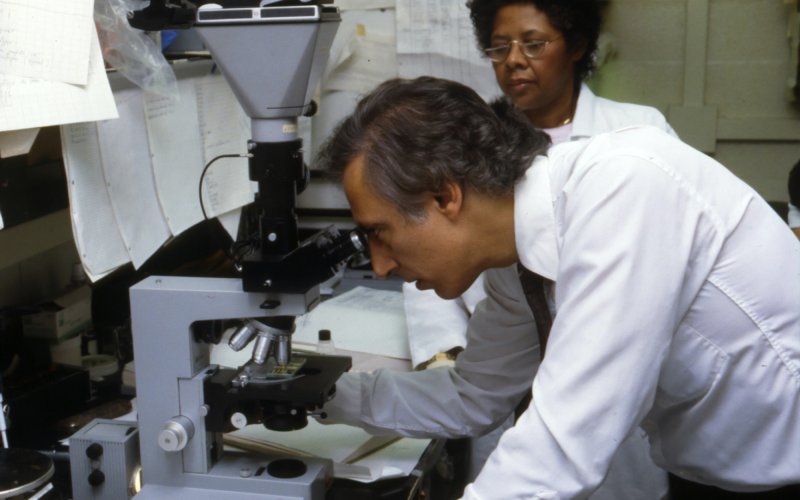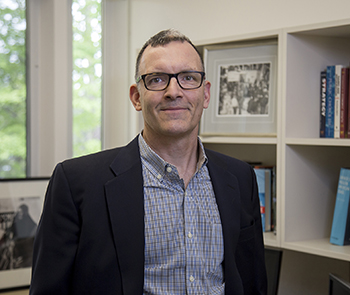Mapping Innovation, Output in the Publishing Life Cycle

ALBANY, N.Y. (Oct. 11, 2022) — A first-of-its-kind study co-authored by economists at the University at Albany shows that scientific creativity peaks earlier among biomedical researchers, with quality declining as authors get older.
The study, “Publish or Perish: Selective Attrition as a Unifying Explanation for Patterns in Innovation Over the Career,” utilized a dataset covering nearly the universe of biomedical publications over a 30-year period from 1980 to 2009. Results showed that for the average researcher, a scientific article they published late in their career was cited one-half to two-thirds less often than an article published early in their careers. The study was published online in the Journal of Human Resources.
Relative to younger authors, older authors use fewer new scientific concepts (identified using text analysis), cite older and less impactful references, and cite a narrower range of references across fewer fields. Thus, it appears that older scientists do not use the newest ideas, do not build on the most promising recent research and are less interdisciplinary than when they were young.

“We constructed additional metrics that captured the breadth of an article’s impact based on the range of fields that cite it, whether the article is employing the best and latest ideas, citing the best and latest research, and whether the article is drawing from multiple disciplines,” said co-author Huifeng Yu, who worked on the study as a PhD student in economics at UAlbany. “These other metrics also lead to the same conclusion about declining innovativeness.”
No previous work has simultaneously accounted for selective attrition, the quantity-quality distinction, and the changing role of scientists over the life cycle. Findings suggest that selective attrition has a much greater effect on the lifecycle pattern of quality than quantity and that accounting for role changes is important for isolating age/experience effects. The findings also suggest that organizations that fund scientists have to maintain a delicate balance between supporting youth and experience.
“Our results suggest that federal science funders face an important tradeoff when deciding whether to shift resources from older to younger scientists,” said Gerald Marschke, a co-author of the study and associate professor of economics at UAlbany. “While the quality of an individual’s research declines with experience, the average ‘ability’ of a researcher who remains active is higher than the average young researcher.”
The findings suggest that reallocating resources from the average senior to the average junior scientist has benefits in terms of funding people at a more productive point in the typical career but also has risks in terms of potentially funding a low ability researcher.
“Young scientists tend to be at their peak of creativity, but there is also a big mix with some being much more innovative than others. You may not be supporting the very best researchers,” said Marschke. “With older, more experienced scientists, you are getting the ones who have stood the test of time, but who on average are not at their best anymore.”
The findings show that selective attrition among less-innovative scientists can help explain why previous studies have had such conflicting results. For instance, studies using Nobel Laureates and other eminent researchers, for whom attrition is relatively small, tend to find earlier peak ages for innovation. In contrast, studies using broader cross-sections of scientists don’t normally find an early peak in creativity, because they don’t account for the attrition.
Researchers have been studying the relationship between age or experience with innovativeness for nearly 150 years, but no consensus has emerged. Findings, in fact, have been “all over the map,” said Bruce Weinberg, professor of economics at The Ohio State University and a co-author of the paper. “For a topic that so many people with so many approaches have studied for so long, it is pretty remarkable that we still don’t have a conclusive answer.”
Additional co-authors on the study include Matthew Ross of New York University and Joseph Staudt of the U.S. Census Bureau.
The research was supported by the National Institute on Aging, the Office of Behavioral and Social Science Research, the National Science Foundation, the Ewing Marion Kauffman and Alfred P. Sloan foundations, and the National Bureau of Economic Research.




